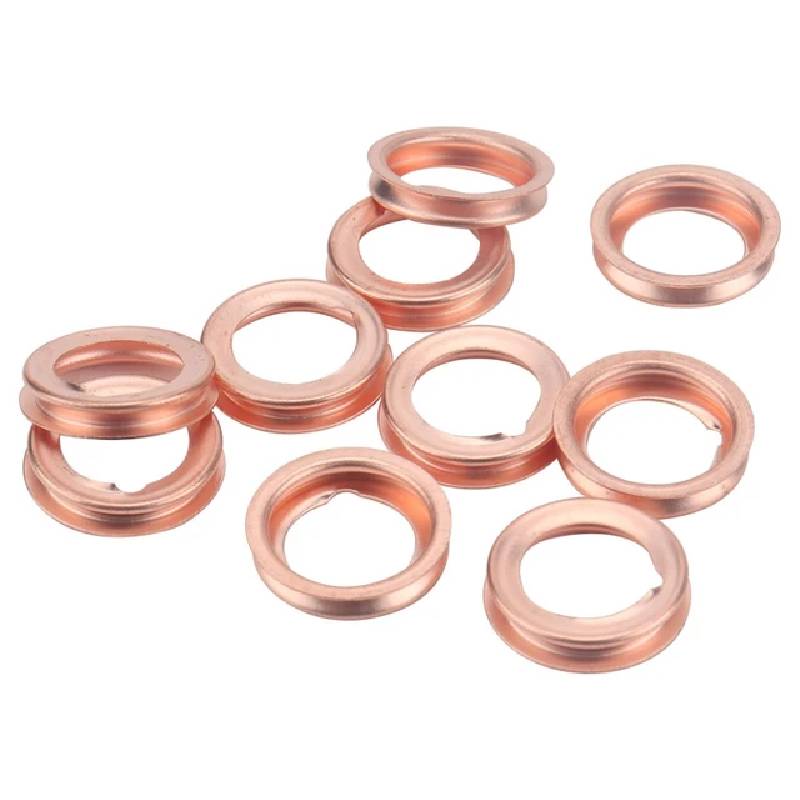Understanding the Benefits of M14 Crush Washers in Mechanical Applications
Understanding the M14 Crush Washer Key Features and Applications
The M14 crush washer is a crucial component in various mechanical systems and applications, primarily known for its ability to create a tight seal between two surfaces. Made from materials like aluminum or copper, these washers are designed to deform under compression, which allows them to fill in minor gaps and irregularities in the mating surfaces, ensuring a leak-proof seal.
What is a Crush Washer?
A crush washer, as the name suggests, is intended to be compressed when a bolt or nut is tightened. This compression causes the washer to crush, filling any voids and leading to an effective seal. Unlike flat washers, which do not undergo significant deformation, crush washers are specifically engineered to provide a strong seal by yielding under load. This characteristic makes them particularly useful in high-pressure environments, such as in automotive and plumbing applications.
The Significance of the M14 Size
The M14 designation refers to the specific metric size of the washer, indicating a hole diameter of 14 millimeters, often used with bolts and nuts of corresponding sizes. The M14 crush washer is commonly employed in automotive applications, hydraulic systems, and machinery where secure sealing is paramount. It is essential to select the correct size and type of crush washer to ensure compatibility with the components involved in the assembly.
Applications of M14 Crush Washers
crush washer m14

M14 crush washers are widely used in various industries, including automotive, aerospace, and plumbing. In automotive applications, they can be found in oil drain plugs, transmission pan gaskets, and anywhere fluid seal integrity is required. The aviation sector also utilizes these washers due to their reliability in high-stress environments. In plumbing, M14 crush washers are employed to prevent leaks in various fittings and connections, enhancing the overall efficiency of plumbing systems.
Installation and Maintenance
Proper installation of an M14 crush washer is vital for achieving an effective seal. The washer should be placed between the bolt/nut and the mating surface, after which the bolt or nut should be tightened to the manufacturer-specified torque. Over-tightening can cause the washer to deform excessively or even fracture, while insufficient torque can lead to leaks.
Regular inspection of the crush washers in critical applications is also recommended. If any signs of wear, deformation, or damage are present, the washers should be replaced promptly to prevent leaks and ensure the safe operation of the machinery or system.
Conclusion
The M14 crush washer plays an essential role in ensuring the reliability and safety of various mechanical systems. With its ability to provide a robust seal under compression, it is a favored choice in numerous industrial applications. Understanding the significance of size, installation, and maintenance can greatly enhance the effectiveness of these washers, leading to long-lasting performance and leak-free operations. Whether in automotive or plumbing systems, the M14 crush washer is an indispensable component in modern engineering.
-
Understanding the Front Main Engine Seal: Purpose, Maintenance, and Installation
News Jul.29,2025
-
Understanding O-Rings and Seal Rings: Types, Applications, and Custom Solutions
News Jul.29,2025
-
Understanding Crankshaft Oil Seals: Rear Seals, Pulley Seals, and Their Role in Engine Integrity
News Jul.29,2025
-
The Importance of Front and Rear Crankshaft Seals in Engine Performance and Oil Management
News Jul.29,2025
-
Crank Oil Seals: Functions, Types, and Cost Considerations in Engine Maintenance
News Jul.29,2025
-
A Comprehensive Guide to O-Rings and Seals: Types, Materials, and Global Applications
News Jul.29,2025
-
Mastering Diesel and Performance Engine Maintenance: A Guide to Critical Oil Gaskets
News Jul.28,2025
Products categories















